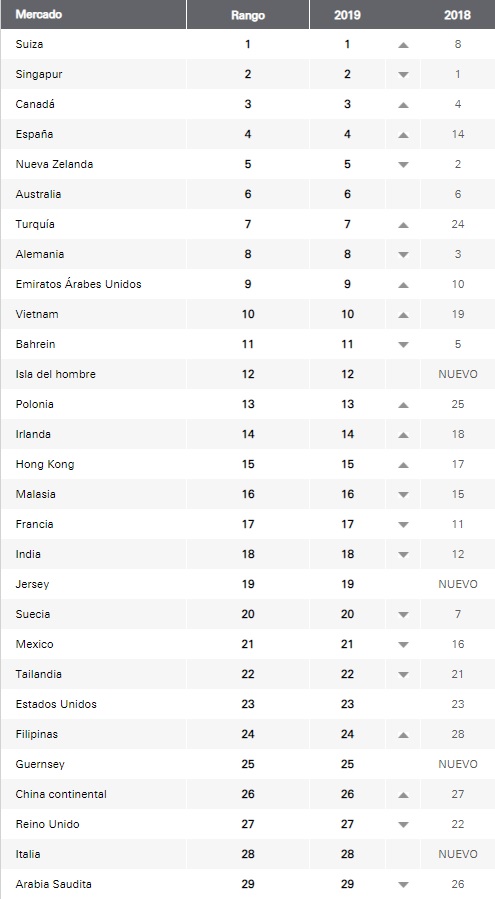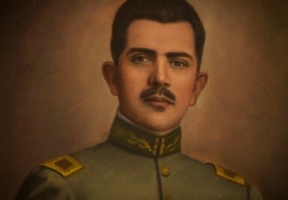I have written about alternatives to living in Mexico with the question If not here, Where?
Doug Casey’s Note: I’ve been emphasizing the importance of making the world your oyster for many years. Most people—and this is especially true of North Americans—tend to stay pretty much where they were born. Acting like medieval serfs or even vegetables rooted to where they were planted. Neither is a good strategy for a person. Certainly not today.
You want to broaden your horizons and keep your options open. Like Gert Mulder.
Gert is a former bank director who’s opened offices all over South America, even though he’s Dutch. He’s become a friend I enjoy spending time with when I’m in Punta Del Este. I don’t even hold it against him that he’s an MBA and a Ph.D. in Finance. It adds weight to his recommendation about being a perpetual traveler (PT)...
Even though he’s been in a wheelchair for the last decade from mild muscular dystrophy, he’s very active and has six children.
He’s an example of putting into practice the theory about being an international man. And is surprisingly typical of the type of person you can meet in Punta or in Argentina just across the Plate River.
By Dr. Gert Jan Mulder
It hung up with a European politician with whom I have been friends for many years. He has been extremely successful in a very short period of time and may even run the risk of becoming prime minister at some point, yet he surprises me at regular intervals when he speculates that he may have to emigrate from Europe one day soon.
This reminds me of a meeting I just had yesterday with an Argentine acquaintance. He mentioned a businessman and close friend in Argentina who has been very successful in the brokerage business but feels he’s in a trap because the Argentine Peronists have won the elections and this will undoubtedly bring that country back to a darker period. Argentina is very likely to close down its economy further, heading for yet another default and increasing government regulations. Even before the new president is to assume office, restrictions have been set that individuals cannot buy more than $200 a month in US currency.
A point to make with both the politician and the Argentine businessman—and so many others, actually millions of others—is that they do not make contingency plans. Most people wait until their problems become imminent before making alternative plans of where to live, which second or third passport to have, or what to do with their business, their family, and ultimately their savings. Being a former banker, hundreds of people have asked me in the past what to do with their savings. The more money they had, the bigger their problems became, resulting in sleepless nights and never-ending analysis of their circumstances. My favorite answer has always been to spend it.
The world has not become an easier place in recent decades, and everything points towards this process of accelerating complexity and uncertainties. The urgency to have proper alternatives for each individual becomes more and more apparent. The bad news is that nothing is certain, and disastrous events do occur.
One day I was talking to a very wealthy and very nice, warm person, when he told me, all of a sudden and out of the blue, that I was a "PT". This abbreviation, PT, can mean a lot of things but usually refers to someone who is a perpetual traveler. These people are always on the move and are truly global citizens, no longer belonging to a certain place that most of us call home. Some also use the abbreviation PT to refer to a prior taxpayer.
The advice that people should take to heart in this ever-changing global village is to prepare alternatives: alternative places to reside, alternative places to stock savings, alternative travel documents, alternative places to register one’s business, and alternative places to find a roof over one’s head. Also to be aware of the fact that property, real estate as well as land, cannot be moved from one place to the other. These things can get you stuck.
So, let’s say you find yourself living in the United States or somewhere in Europe, mostly in one of those member states of the EUSSR, where your prospects to a free and happy life are becoming dimmer and dimmer. This brings the question, "If I have to leave, where do I go?"
This is a tough one, which Doug Casey and I answered a long time ago. These decisions are never easy and are always very personal. Doug and I just happened to end up in Uruguay, South America, a little country tucked away between Brazil and Argentina. Doug calls it "a small, relatively insignificant backward socialist country".
And yet it does bring with it an attractive laundry list of positive features: generally speaking and with the exception of a few months of winter, a mild climate; a country that is nearly empty with less than 20 people per square kilometer; a tax system that is based on the territorial principle, meaning that you pay taxes only on income that is generated in Uruguay; relatively stable political, economic, and social conditions; a population that is predominantly of European origin, namely Spanish and Italian; and people that seem to have struck a good balance between work and pleasure, although the latter qualification depends entirely on taste and personal judgment. Some may find them on average to lack ambition and discipline.
For us, libertarians, freedom and especially personal freedom is the highest value we try to achieve, and by doing so I personally fail to see how people can manage their lives, with all the controls and all the limitations in so-called first-world countries. Every sign seems to suggest that people in these countries are about to lose whatever is left of their personal freedom at an alarming rate.
So, if freedom is dear to you, stop hesitating and start thinking about moving out of your first-world country if you can and focusing on the alternatives and advantages of so-called third-world countries. Chances are that you will be able to manage your life, preserving what is most dear to you—personal freedom—by relocating to a place on this planet that is not about to turn into George Orwell’s nightmare, 1984.
And while considering this, please do remember the suggestions on how to become a PT.
Editor's Note: The world is facing a severe crisis on multiple fronts.
Gold is just about the only place to be. Gold tends to do well during periods of turmoil—for both wealth preservation and speculative gains.
That's precisely why legendary speculator Doug Casey’s colleague just released an urgent video.
It reveals how it will all play out, and how you can set yourself up for big profits with a lesser-known way to invest in gold. It's one of Doug's favorite ways to invest in gold. Click here to watch it now.
Photo by Clay Banks on Unsplash













